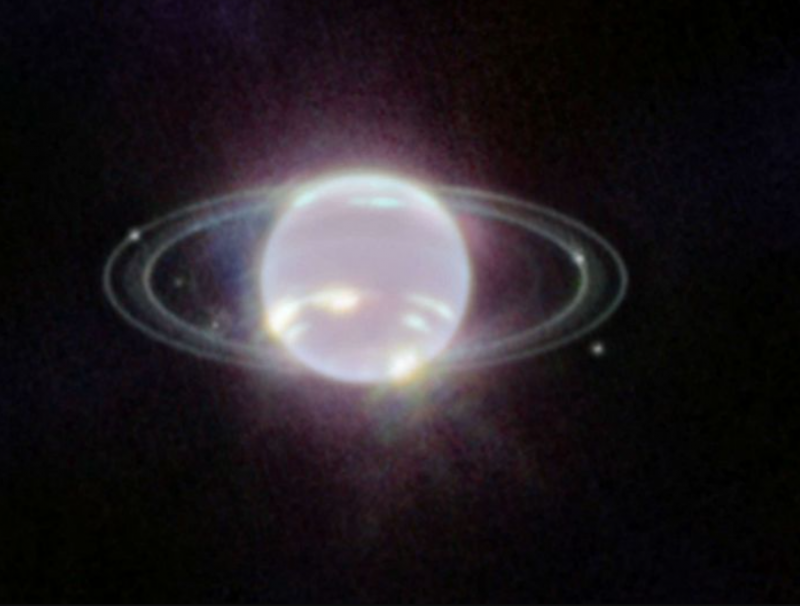
USA: Observations of Uranus by NASA's James Webb Space Telescope have revealed extraordinary details, including the planet's spectacular ring system and atmospheric features.
There are 13 known rings on Uranus, 11 of which can be seen in Webb's image. Webb's onboard Near Infrared Camera (NIRCam) has almost completely captured all of these rings, even though some of them are so bright that they appear to merge.
Webb has the ability to conduct infrared observations, which allows it to see the cosmos more clearly than any other telescope.
Also Read: The debut of an integrated image generator in a browser is made by Microsoft Edge
Webb has once more astounded astronomers with its observations, offering insightful details about the ice giant Uranus. The European Space Agency, the Canadian Space Agency, and NASA collaborated to develop the $10 billion observatory, which is hailed as the most potent space telescope ever built.
There are 11 visible rings on Uranus out of its total of 13, nine of which are regarded as the planet's main rings. The two remaining rings are flimsy dusty ones that were found by NASA's Voyager 2 mission in 1986.
Only two other facilities, besides Webb, have managed to capture Uranus's smallest dusty rings. Both were recently discovered by the Keck Observatory, one by Voyager 2, and the other.
Due to the composition of its interior, Uranus is categorised as an ice giant. It is believed that a small rocky core is surrounded by a dense fluid of icy substances like water, methane, and ammonia that makes up the majority of the planet's mass.
A rather peculiar planet is Uranus. With a tilt of 97.77 degrees, it is the only planet in the solar system whose equator rotates on its side and whose equator is almost at a right angle to its orbit. Its tilt results in extreme seasons. There are several years of nonstop sunlight at the poles, followed by an equal amount of total darkness.
At the north pole of Uranus, which is depicted in the picture, it is currently late spring. Summer will only arrive at the planet's north pole in 2028. Summer was in full swing at Uranus' south pole when Voyager 2 paid the planet a visit. The south pole is currently hidden by the planet's "dark side" and cannot be seen.
A polar cap, which is a bright region at Uranus' pole facing the Sun, can be seen in the image to the right. In the summer, when the pole receives direct sunlight, this region seems to appear and then vanish. The polar cap has an intriguing feature that Webb discovered, according to NASA: "a subtle enhanced brightening at the centre of the cap."
Also Read: Odisha CM visits Nippon plant in Japan; discuses green tech for Odisha
At the edge of the polar cap, a bright cloud and a few more subtle extended features can be seen. A second extremely bright cloud can also be seen near the planet's left limb. According to NASA, these clouds are typical of Uranus, are visible at infrared wavelengths, and are thought to be related to storm activity.
Webb was able to see the polar cap much more clearly than other strong telescopes like the Hubble Space Telescope and Keck Observatory. The unprecedented sensitivity of Webb's NIRCam instrument may be to blame.
Six of Uranus's brightest moons, including Ariel, Puck, Miranda, Umbriel, Titania, and Oberon, have also been photographed by the Webb telescope. 27 moons of the planet are known.
Also Read: Next week SpaceX's Starship rocket might conduct its initial orbital test flight
Several galaxies and other background objects can also be seen in Webb's image. It is only the beginning of what Webb can do when observing this enigmatic planet (Uranus), according to NASA in a blog post.